Aardvarks look like small pigs with rabbit-like ears and kangaroos’ tails, yet they are not related to any of these animals. In fact, the elephant is one of their closest living relatives!
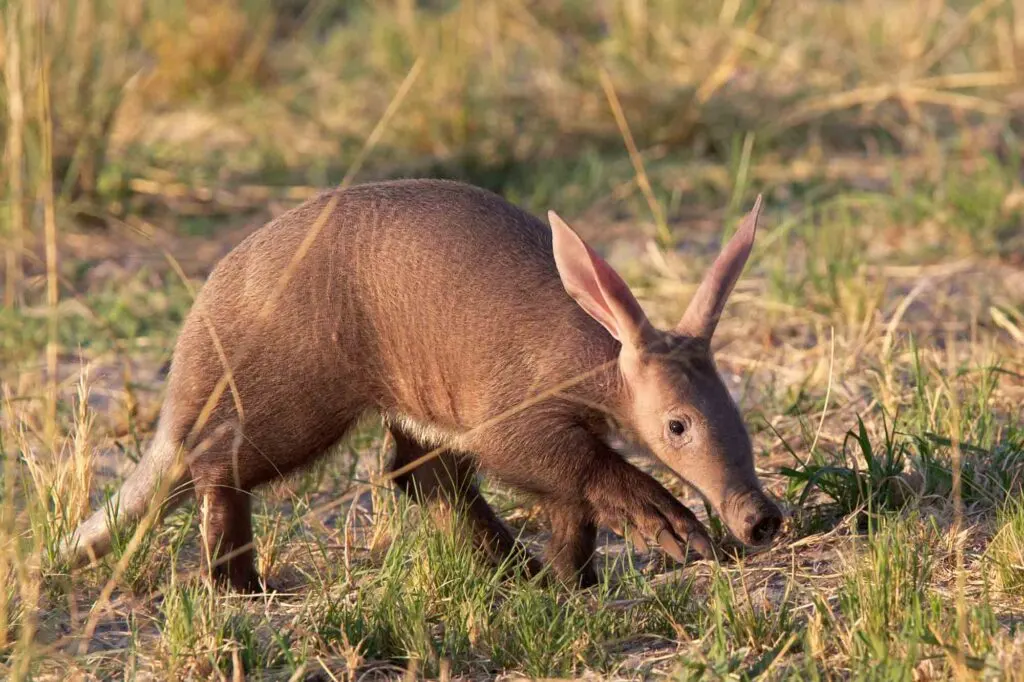
Aardvark
Orycteropus afer
Aardvark Scientific Classification
- Kingdom: Animalia
- Phylum: Chordata
- Class: Mammalia
- Order: Tubulidentata
- Family: Orycteropodidae
- Genus: Orycteropus
- Species: Orycteropus afer
Aardvark Appearance
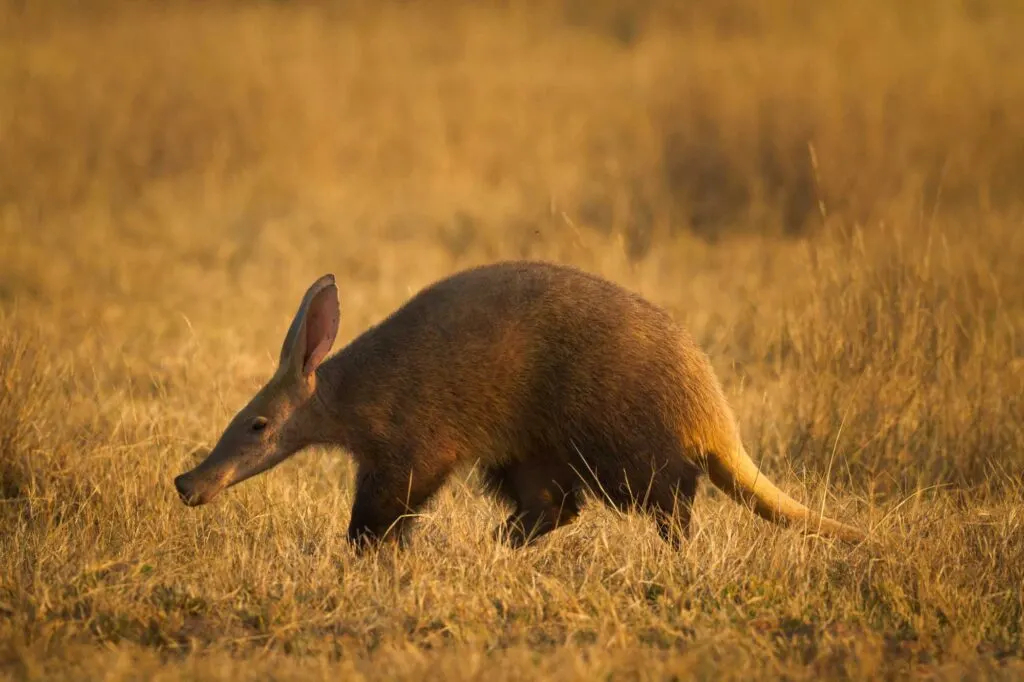
- Lifespan: 18-23 years
- Length: 43-53 inches
- Tail length: 21-26 inches
- Height: 22-24 inches
- Weight: 110-180 pounds
- Top speed: 25 mph
The aardvark, whose name translates to earth pig, is one of the most unique animals in terms of appearance. With its thick body and curved back, the aardvark most resembles a pig.
However, its ears, close to 10 inches in length, look more comparable to that of a rabbit. Its 28-inch tail, which is quite thick at the root, is similar to a kangaroo.
A female aardvark’s tail is usually much lighter in color than a male’s. An aardvark can weigh up to 180 pounds and, measured from head to tail, reach over 7 feet in length. Its thick skin is covered by a pink or yellowish-gray coat, thin and sporting sparse hairs.
This coat, however, takes on the coloration of the soil in the animal’s habitat. The aardvark’s legs are covered in thick fur. Its four-toed front legs are shorter than its five-toed rear legs.
Each of its toes carries a shovel-shaped spike that looks like a hybrid of claw and hoof with which it digs burrows. The earth pig’s eyes are small, black, and do not see well. The animal has a long movable snout with nostrils at the tip, which it can shut to protect against dust or insects.
The nostrils are highly effective despite being covered in hair. The aardvark’s small, tube-shaped mouth contains distinctive teeth that continuously wear out and regrow.
The animal’s sticky, bulging tongue, which measures close to 12 inches, has earned it comparisons to the anteater. Some other names for the aardvark are earth hog, ant bear, and Cape anteater.
Did you know? Aardvarks are skilled diggers! They can dig up to 2 feet in 15 seconds.
Aardvark Range & Habitat
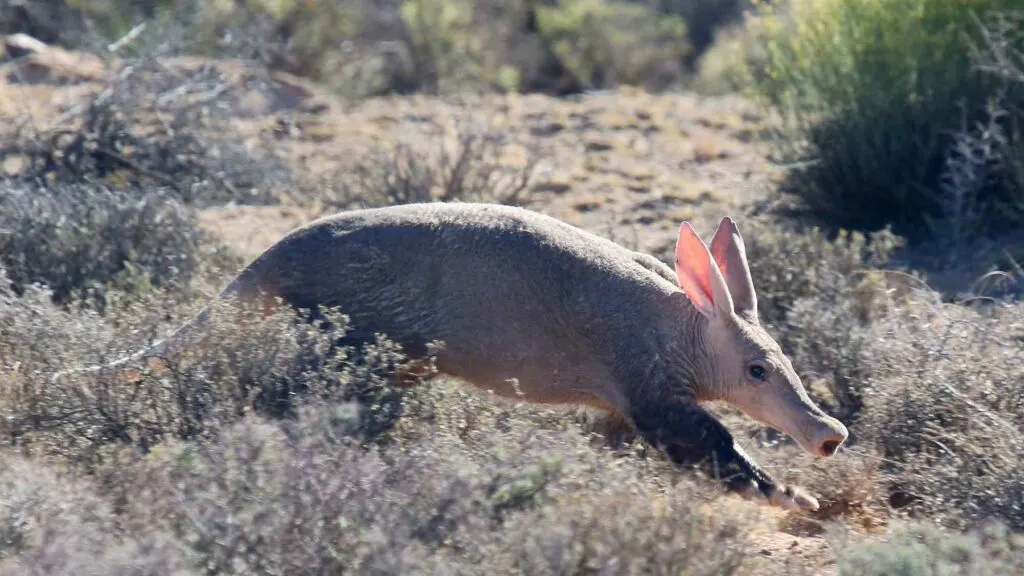
Aardvarks are found in Africa, mainly south of the Sahara, in savannas, grasslands, forests, and semi-arid regions where food is abundant.
They generally avoid swamps and mountainous terrain where digging is impossible. Aardvarks have, however, been found in high-altitude areas in Ethiopia.
They spend most of the day in their burrows, coming out to range only when it’s dark. These caves are usually elaborate constructions with several compartments, some measuring close to 42 feet.
Distribution
- Continents: Africa
- Countries: Angola, Benin, Botswana, Burkina Faso, Burundi, Cameroon, Central African Republic, Chad, Congo, DR Congo, Cote d’Ivoire, Djibouti, Equatorial Guinea, Eritrea, Ethiopia, Gabon, Gambia, Ghana, Guinea, Guinea-Bissau, Kenya, Liberia, Malawi, Mali, Mauritania, Mozambique, Namibia, Niger, Nigeria, Rwanda, Senegal, Sierra Leone, Somalia, South Africa, South Sudan, Swaziland, Tanzania, Uganda, Zambia, and Zimbabwe.
Habitat
Forest | Savanna | Shrubland | Grassland
Aardvark Behavior and Lifestyle
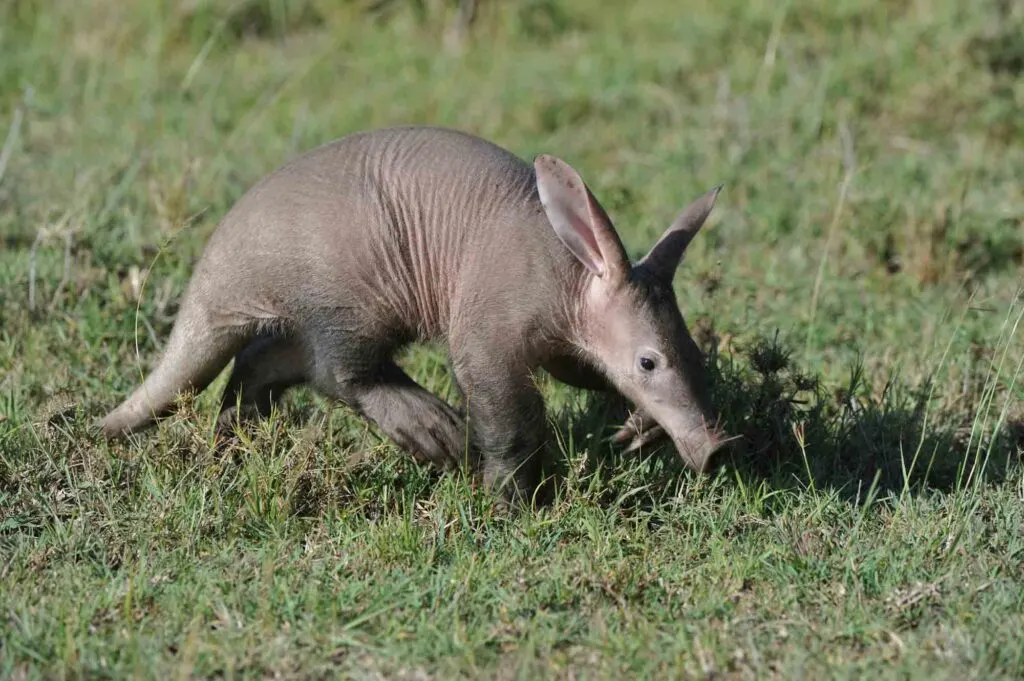
Aardvarks are nocturnal and solitary mammals. They never move in groups, only sharing dens with their cubs or with few other aardvarks in the event of overpopulation.
These animals spend the daytime in their burrows, venturing out at sunset to find food. An individual aardvark may dig up to three different burrows, each serving a specific purpose.
Aardvarks exit their burrows at night carefully, jumping, sniffing, and looking around for several minutes before finally leaving. They’ve been known to travel up to 15 miles in a single night when foraging.
Unless in the process of digging, which it does with remarkable speed, the aardvark moves relatively slowly. Aardvarks are mostly quiet animals. They emit a wobbling, bleat-like sound when threatened and grunt on occasion as a means of communication.
Read next: Animals That Start With A
Aardvark Diet
Aardvarks mainly feed on insects, termites, and ants. They occasionally eat the larvae of beetles and a fruit called aardvark cucumber, with which they have a symbiotic relationship.
They use their mobile noses to detect food sources and their strong claws to break termite mounds and ant nests.
Once access to a termite nest has been achieved, an aardvark will use its long tongue to scoop up the insects and swallow them whole. In this way, the animal can eat up to 50,000 termites in one night, spending hours at a single mound.
A muscular portion in the lower region of the aardvark’s stomach acts like a gizzard, helping the animal grind down the swallowed meal for easy digestion.
Due to threats from predators, aardvarks rarely drink water, relying mainly on the moisture their diet provides.
Aardvark Reproduction and Mating
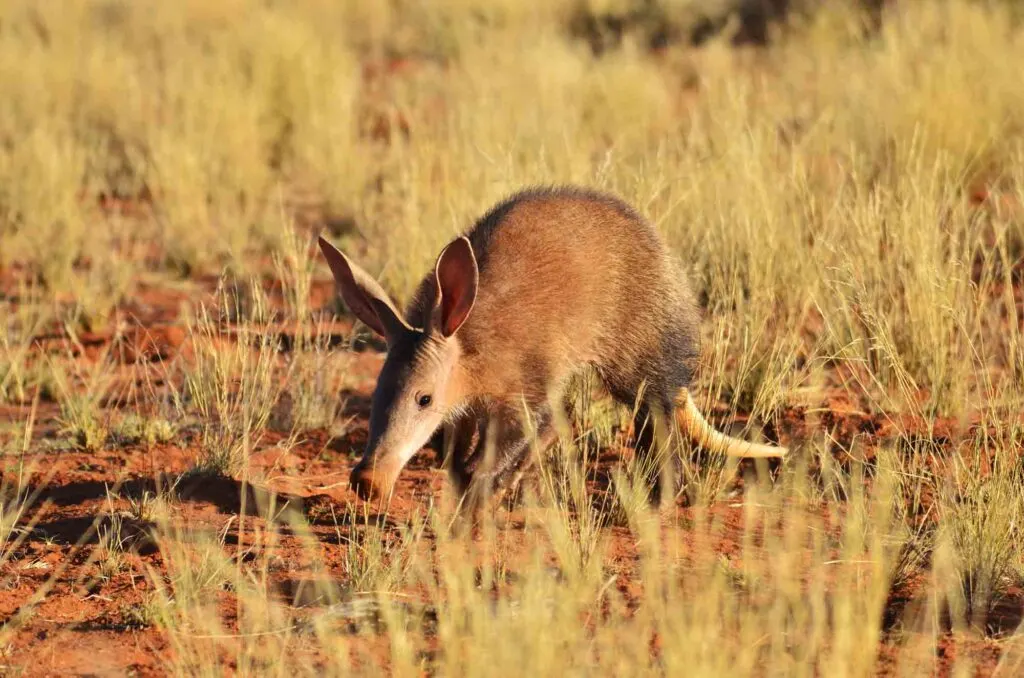
Aardvarks are solitary animals that pair up only for mating. The breeding season varies with location, some starting in March or April and others between October and December.
During this season, a male aardvark usually mates with more than one female. After seven months of pregnancy, the female births a single baby, called a calf or cub.
Birth often falls in the rainy season, taking place in the underground hollow where the cub remains for a few weeks, being fed milk by its mother.
Newborn aardvark cubs weigh a little over 4 pounds, are hairless, and have claws and floppy ears. The ears become firmer at three weeks, while hair begins to grow at around six weeks.
At about three weeks old, the young cub, now able to eat small insects, starts to accompany its mother on hunting trips. It, however, continues to feed on the mother’s milk for close to 3 months before it is weaned.
An aardvark cub achieves independence at six months old when it becomes capable of digging its own burrow. Most cubs, however, wait until the breeding season before leaving their mother’s burrow.
Adult aardvarks attain sexual maturity at 24 months of age. While an aardvark can live more than 22 years in captivity, its lifespan in the wild is uncertain.
Aardvark Conservation Status
Least concert[1]
Aardvark Predators and Threats
Aardvarks are preyed upon by several animals in the wild. While the predators vary depending on habitat, snakes, leopards, hyenas, lions, and wild dogs are the animals that often hunt aardvarks, which run in a zigzag fashion to elude enemies.
The aardvark’s burrowing habits often destroy crops, fences, and other structures, which leads to confrontations with humans.
Humans also hunt aardvarks for food and use their body parts. Body parts like aardvark teeth, claws, and skin are used to make decorative adornments. Another human threat is the destruction of the aardvark’s habitat through agricultural activities.
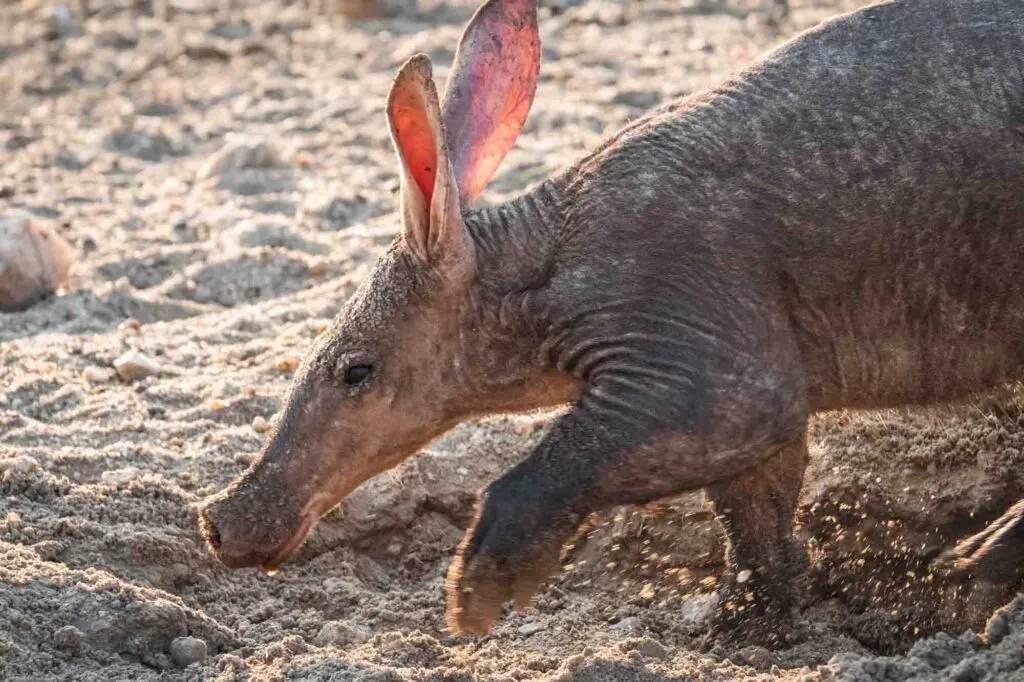
Aardvark Facts
Here are some fun and interesting facts about aardvarks:
- The aardvark has one of the sharpest senses of smell in the animal kingdom. Its nine olfactory bulbs are more than any other mammals’.
- Aardvarks are excellent swimmers, capable of navigating strong currents.
- Aardvarks walk on their toes rather than the soles of their feet. An aardvark standing on its toes is said to be squatting!
- Aardvarks do not pass waste in open spaces. They dig small holes, which they cover up after the act.
- An aardvark is the main character of the comic book Cerebus, which saw 300 issues published across three decades.
